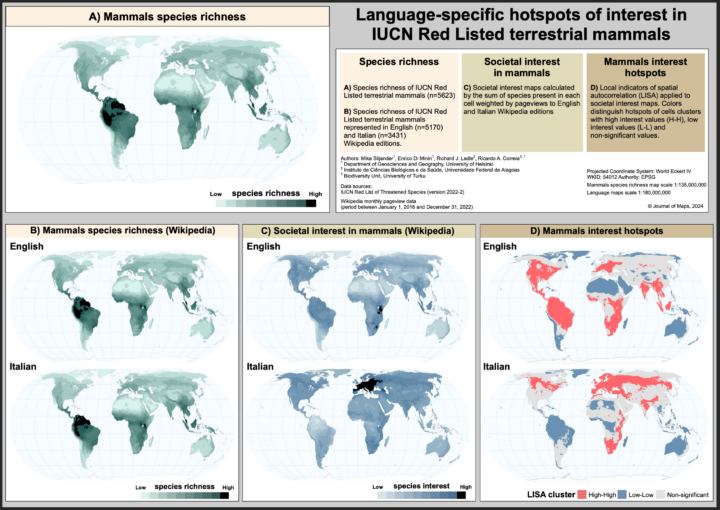BISONS Lab explores societal interest in conservation
Two new publications from the BISONS lab are using novel methods to explore the impact of species charisma and societal interest on biodiversity conservation.
The first study led by Mika Siljander introduces a novel method for mapping societal interest applied to terrestrial mammals. It uses page views across different language editions of Wikipedia, one of the wolds most visited websites, and combines this with IUCN species distribution maps to map where hotspots of public interest in species can be found across different languages. Published in Journal of Maps, the study reveals that societal interest varies by language and region, and is not necessarily tied to areas of high biodiversity. This highlights cultural differences in interest towards biodiversity and offers new tools for identifying public engagement hotspots opening new avenues to integrate societal dimensions in conservation planning.
The BISONS lab is also working on a systematic map following the publication of a protocol in Environmental Evidence. The systematic map led by Maxim Isaac aims to map how the term charisma is used and defined in literature with the hope of clarifying how this widely used concept is leveraged to focus conservation actions on different aspects of nature. The team hope the work will lead to a greater understanding of how species charisma is perceived and how it shapes human attitudes towards nature. This systematic map sets the stage for future research into how public and scientific preferences shape conservation outcomes.
Both studies are part of a broader project that is investigating species of conservation concern that lack widespread public appeal towards promoting more inclusive and effective conservation strategies.
The systematic map protocol is available in Environmental Evidence via DOI: 10.1186/s13750-024-00353-2.
The societal interest mapping study can be accessed in Journal of Maps via DOI: 10.1080/17445647.2024.2429711.
